LG G4 review: An eyecatching, understated G3 upgrade
The LG G4 is a stylish smartphone that doesn't try to reinvent the wheel
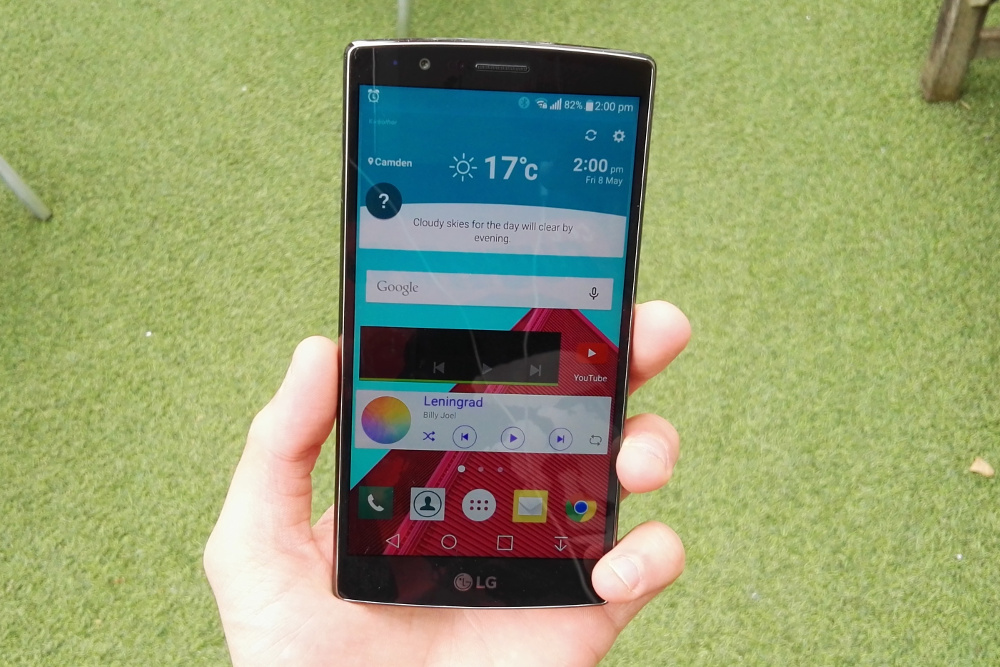
The LG G4 may not be putting on the biggest song and dance, but that doesn't mean it isn't worth your time. The essential core features of a smartphone have been tweaked and improved upon to produce a device that does everything it needs to with gusto, and is a commendable successor to the G3.
-
+
Curved body is comfortable; Leather backing looks great; Camera is superb;
-
-
Quite similar to the G3; Non-leather finishes are underwhelming; Battery life could be better

As the follow-up to one of the best phones of 2014, the LG G4 has some pretty big shoes to fill.
It also faces stiff competition from the Samsung Galaxy S6, one of its biggest rivals that has impressed critics with a gorgeous curved-edge display and seriously premium build quality.
Rather than squaring up directly to the likes of the latest iPhone and the Galaxy S6, LG has gone for a much more modest, understated device with the G4. It's still flagship-grade, but it's focusing on improvement rather than innovation.
LG G4: design
The G4's most immediately eye-catching feature is the genuine leather backing fitted on most models. It's unique, interesting, and a breath of fresh air after all the metal and glass that we're usually faced with.
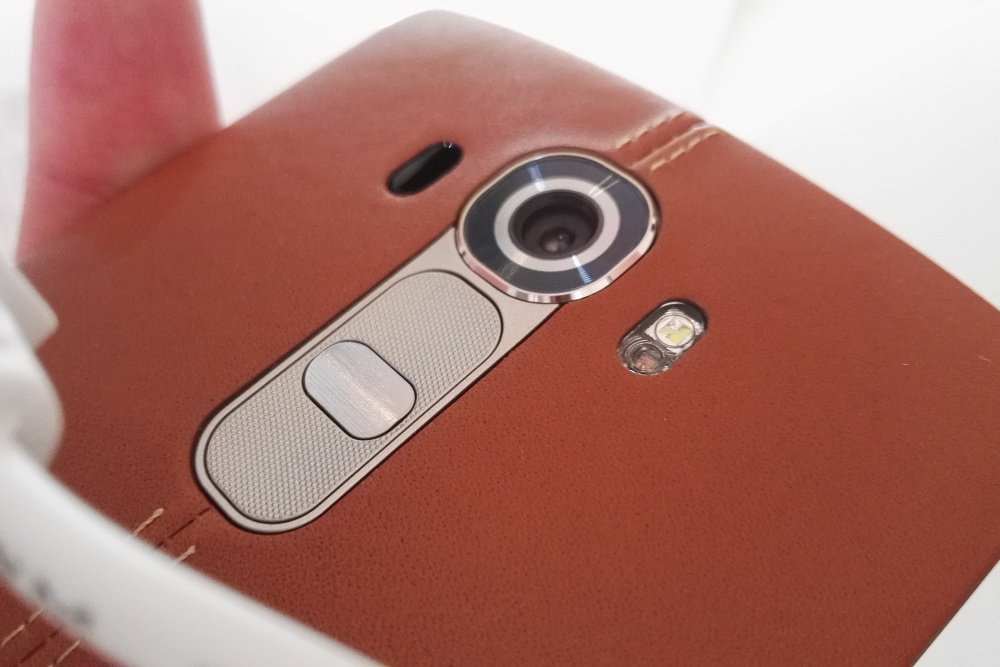
Although companies such as BlackBerry have released leather-backed phones before, the G4 still stands out. From a visual perspective, it really makes a splash, and comes in a series of colours both vibrant and sober.
Sadly, while we were looking forward to a leather phone after our hands-on at the G4's launch, our pre-release review unit came with a much more pedestrian metallic-finished plastic body.
The metallic choice is plastic dressed up to look like brushed aluminium with diamond-shaped texturing, but it's still just plastic. The ceramic-finished option breaks off from the pack a little more, but it's not much better.
Sign up today and you will receive a free copy of our Future Focus 2025 report - the leading guidance on AI, cybersecurity and other IT challenges as per 700+ senior executives
They both make a huge contrast to the leather, which has a really nice, premium feel, and is definitely a lot more visually distinctive.
Curved body
Another supposedly unique feature is the G4's Slim Arc Design', which translates to an ever-so-slightly curving body shape.
It's not quite as pronounced as the LG G Flex 2, announced earlier this year,and it does make us wonder why the halfway-house between the G Flex 2 and standard screens is necessary.
The curve itself is barely there a couple of degrees at most. It shouldn't make a huge amount of difference either way, despite LG's claims that it'll "fit the human body more comfortably", but it does.

In the hand, the G4 doesn't initially feel a huge amount more different or ergonomic than any other smartphone. However, because we know that there is a curve, we kept subconsciously feeling like we were holding it wrong, and that it should be making more of a difference.
We very quickly adapted to it, though, and it does often feel more natural that perfectly flat handsets. Not much, mind; it's not going to revolutionise anyone's life.
In fact, you may not even notice it most of the time, but it's another one of the G4's minor incremental improvements that we're glad to have.
On the other hand, it does mean that the G4 will never quite lie flat. A small and petty quibble, to be sure, though.
Aside from the new cladding and curved profile, however, not much has changed design-wise. The body of LG's new phone looks pretty much identical to its predecessor, the G3.
LG still insists, in the face of market consensus, common sense and basic human anatomy, on placing the power and volume buttons round the back of the device.
It's as annoying, awkward and counter-intuitive as ever, and the fact that they haven't followed everyone else in relocating them to a much more convenient position on the side is baffling.
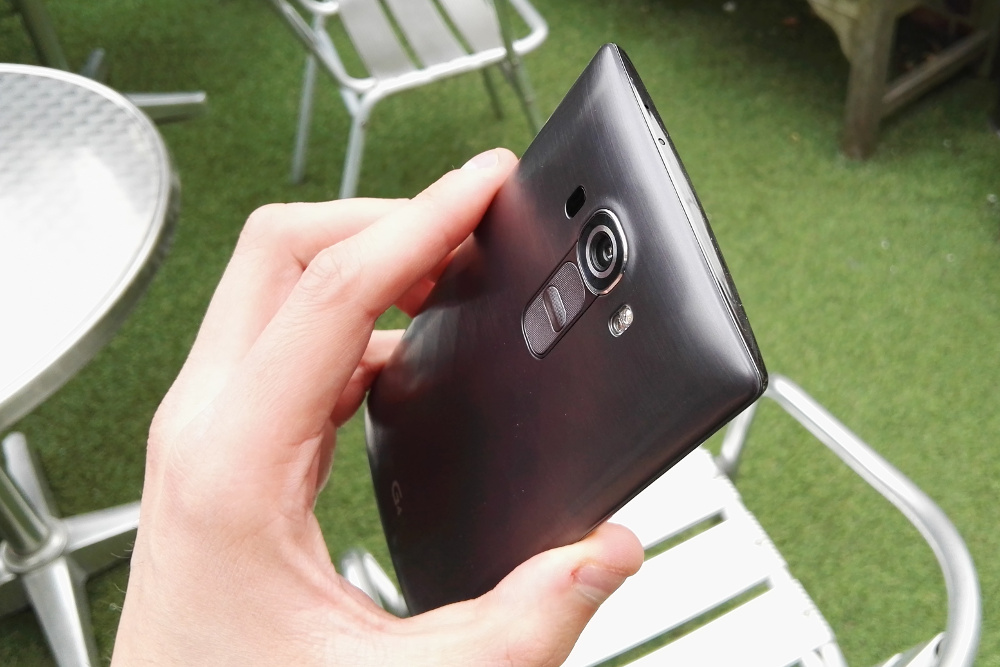
The chrome-effect bezels around the edges are reasonably attractive, and they distract from noticing that the phone's a little on the chunky side. It's pulling the same trick at the HTC One M9, with the curved back masking the fact that it's not the slimmest device in the world, with a peak thickness of 9.8mm.
Like the M9, however, this ergonomic choice means that it doesn't feel as thick as the dimensions may suggest. This is helped by the handset's relatively light weight of 155g.
The display surround also has a really nice textured finish beneath the glass. It's a small touch, but it's a detail that makes it stand out from rivals.
LG G4: software
As per usual, LG have overlayed their own skin onto the Andoid OS; in this case, naming it UX 4.0. It's not all that different from the stock base of Android Lollipop, bar a few specific features and the odd cosmetic tweak.
Interestingly, however, elements like the simplistic, minimalist icons and the notification tray with built-in settings toggles were all present in the LG G3 before they became standard-issue in Android 5.0. LG, it seems, was ahead of the curve.
On the other hand, while LG can give itself a well-deserved pat on the back for its clairvoyance, this also means that there's not a lot new here.LG's proprietary elements have been given tune-ups, of course the Smart Notice widget that'll appear on the G4's home screen by default is now smarter and more personalised.
For example, if it's been raining for two days in a row (not exactly unusual in Britain), the notification will read it's still raining' or it's raining again'. It'll also take your personal habits into account, advising you to take care while driving in wet weather and suchlike.
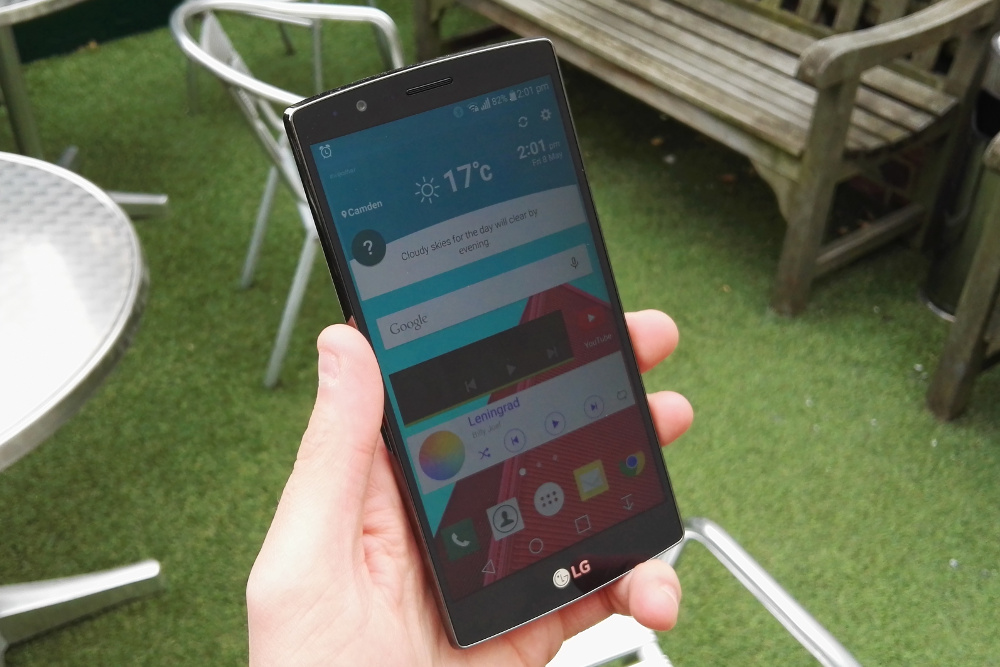
It'll even suggest ways to reduce battery drain and remind you of contacts' birthdays. Essentially, it's near-identical in function to Google Now's cards system, but the new additions work well and give it a bit more personality.
The fact that the UI isn't wildly new or different isn'ta bad thing though. LG's UX 4.0 is focused on being simpler and more intuitive than previous attempts, rather than being flashy and innovative.
Continually throwing new features at the wall and seeing what sticks can get a bit tedious, so it's refreshing to see a company polishing the features that it knows it's already got right. There's nothing revolutionary about LG's latest interface, but it does everything you'll want with a minimum of fuss.
LG G4: display
The G4's 5.5in Quad-HD display is bright, clear and sharp. LG is touting the G4's IPS Quantum display as having 50 per cent greater contrast and 25 per cent greater brightness than traditional LCD screens. It also conforms to the DCI image standard rather than sRGB, which supposedly leads to more accurate colour reproduction.
It certainly looks the part. The mammoth 2,560 x 1,440 resolution makes even the smallest text crisp and readable, and video is a joy to behold. It falls down ever-so-slightly in comparison to the Galaxy S6's AMOLED display, in that colours aren't quite as vivid, but it makes up for it by covering almost 98 per cent of the sRGB colour spectrum.
The 468cd/m2 brightness isn't the best we've ever come across, but it helps cut down on battery drain, and is more than enough to ensure perfect sunlight readability. Furthermore, the contrast ratio is superb, measuring around 1650:1.
LG G4: camera
LG claims to have conducted extensive customer research as part of the G4's development, which helped it identify the camera as a key selling point.
As such, it's made an effort to pack in a number of improvements designed to grab the attention of both amateur and professionalphotographers.
Chief among these is the combination of a larger F1.8 aperture, which supposedly lets in 80 per cent more light, and a 40 per cent larger image sensor to capture that light.
Along with improved Optical Image Stabilisation, these supposedly make the G4 a viable option even for professional snappers.
The G4's shots are appropriately stunning. Its predecessor had one of the best cameras of last year, and it's been improved upon greatly. One of its most impressive features is the manual shooting mode, which allows users to adjust a whole range of DSLR-style settings such as white balance, ISO level and shutter speed.
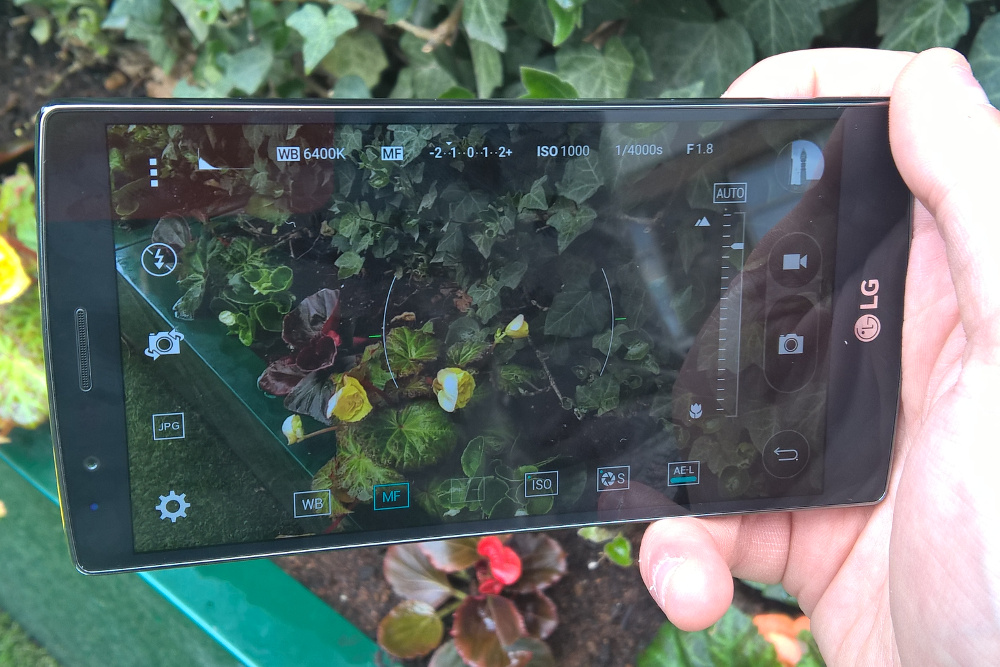
This allows much greater control over photos, and can result in some great-quality shots with a little tweaking.
While we can't quite see it overtaking professional cameras, the added control will be a great tool for those who want to get their pictures just right.
Users can also save images as uncompressed RAW files, which is the format used for professional photo-editing.
For those that don't like to faff around with settings and sliders, the auto-shoot mode is great, focusing and adjusting to changing conditions quickly and effectively. There's even a simple' mode, which strips out every single option, letting you take instant photos just by tapping anywhere.
LG G4: hardware and specs
The LG G4 packs a six-core 1.4GHz Snapdragon 808 processor, which is exceedingly nippy without being top-of-the-line. It's not as much of a workhorse as the Apple flagships or the S6, but paired with 3GB of RAM, it's more than fast enough to cope with just about everything you'd care to throw at it.
This was borne out by our benchmarks: the G4's GeekBench score of 1110 for single-core operations and 3203 for multi-core ones is up there with some of the best. As we expected, it's not quite as stand-out as its top-end rivals, but highly respectable nonetheless.
Graphically, the G4 is slightly less capable. Although the Adreno 418 GPU handled our real-world 3D gaming test - a spirited bout of Real Racing 3 - with nary a hint of slowdown or stuttering, our benchmarks told a different tale.

In the GFXBench onscreen T Rex test, it received a result of around 24 fps. Not the worst score, but again, lagging considerably behind the likes of the iPhone 6 Plus. It was the same story with the Sunspider browsing benchmark; a respectably nippy 702ms, but trounced by its quad-core competitors, many of whom beat it by almost double.
That being said, nothing we put the G4 through gave it noticable pause.It'll flip back and forth between apps with ease and multi-tasking with several concurrent programs presented no difficulties whatsoever. Load times were also a breeze, and it fired up even our more demanding apps in seconds.
LG G4: battery
The LG G4 comes equipped with a 3000mAh removable battery, and since battery life is another of the key areas being targeted by the company, it's also got a number of software tweaks designed to maximise it.
The G4's Graphic RAM shuts off the CPU when displaying a still frame, in order to reduce the power drain when viewing static images. It also provides notifications, via the Smart Notice widget, when apps are drawing excessive power, asking if you want to turn them off completely.
However, while these touches do help, that Quad-HD display is still a power-hungry beast. Leaving the phone at full brightness will curtail your battery life to around nine or ten hours with moderate-to-heavy use. Our HD playback battery test gave the same result, and the G4's charge depleted at around 14 per cent per hour in airplane mode.
Manage your power more frugally, on the other hand, and you can stretch this disappointing figure out significantly. We found it comfortably lasted a day, provided the display was kept between 50 and 75 per cent. Regardless, you may want to keep a backup battery handy.
LG G4: price
The LG G4 is its parent company's latest flagship model. However, while rivals like Samsung have followed in Apple's footsteps by getting continually more expensive, LG has said that the G4 will likely be around the same price upon launch as the G3.
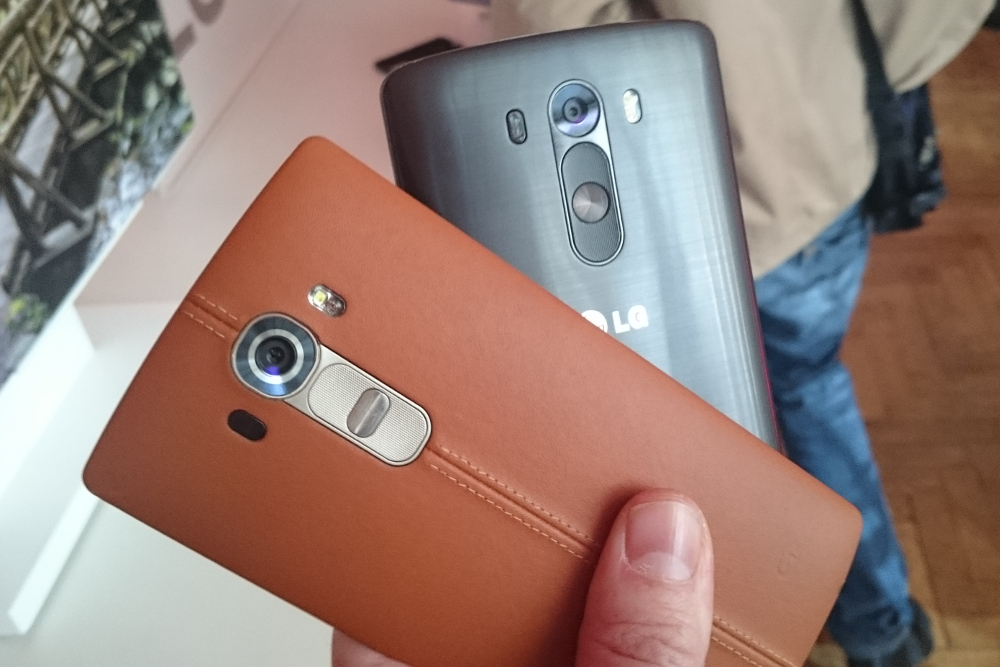
This suggests that LG is opting for a more modest price of around 500. This is about what we'd expect, given that the G4 lacks the wow factor' that might justify the S6 Edge's substantial cost.
It's still not cheap, of course, but it's a more sensible price than some rival flagships are charging. While the premium luxury models are nice, we also like having an option that's still high-end without being quite so tough on the bank balance.
LG G4: connectivity
One of the revelations allegedly turned up by LG's research is that consumers would be prepared to sacrifice a little slimness in a device, in exchange for having a removable battery and expandable storage.
The fact that the G4 includes both those features was a little surprising, given that many of its competitors have taken the opposite tack. It's a welcome surprise though, and we're pleased to see LG hasn't abandoned such a popular feature.
The addition of expandable memory via MicroSD could easily have tempted LG to dial back the onboard storage. However, they've been surprisingly generous, with 32GB as standard.
Unfortunately, the trade-off for these features is that the G4 has once again sacrificed our beloved waterproofing. Not that you'd want to get all that leather wet in the first place, but we're still sad not to see it.
In terms of wireless connectivity, the G4 sports a range of flagship-grade features, including NFC, Bluetooth 4.1, and .11ac Wi-Fi. It's a pleasingly well-rounded array, if not entirely unexpected.
LG G4: verdict
We respect the LG G4 for not trying to reinvent the wheel. It's not showcasing anything mind-blowingly innovative or jaw-droppingly fancy, it's just ensuring the features it already has are the best they can be.
It's largely suceeded, too. The display is great, the UI's clean and intuitive, and the design is sleek and eye-catching. Yes, it's essentially an updated version of the G3, but the G3 was - and is - a great phone. Now the G4 continues that tradition.
There is definitely a place in the market for a handset that focuses on doing a few things really well. It may not have the pizzazz of more expensive rivals, but it's slick, it's well-made, and the LG G4 is overall a rather impressive device. We're highly looking forward to recieving a retail version of the finished device.
Verdict
The LG G4 may not be putting on the biggest song and dance, but that doesn't mean it isn't worth your time. The essential core features of a smartphone have been tweaked and improved upon to produce a device that does everything it needs to with gusto, and is a commendable successor to the G3.
Processor: Qualcomm Snapdragon 808 six-core CPU
GPU: Adreno 418
Memory: 3GB RAM
Storage: 32GB
Connectivity: 802.11 a/b/g/n/ac WiFi, Bluetooth 4.1, NFC, 4G
Dimensions: 148.9 x 76.1 x 6.3/9.8 mm
Weight: 155g
Adam Shepherd has been a technology journalist since 2015, covering everything from cloud storage and security, to smartphones and servers. Over the course of his career, he’s seen the spread of 5G, the growing ubiquity of wireless devices, and the start of the connected revolution. He’s also been to more trade shows and technology conferences than he cares to count.
Adam is an avid follower of the latest hardware innovations, and he is never happier than when tinkering with complex network configurations, or exploring a new Linux distro. He was also previously a co-host on the ITPro Podcast, where he was often found ranting about his love of strange gadgets, his disdain for Windows Mobile, and everything in between.
You can find Adam tweeting about enterprise technology (or more often bad jokes) @AdamShepherUK.
-
 Anthropic says MCP will stay 'open, neutral, and community-driven' after donating project to Linux Foundation
Anthropic says MCP will stay 'open, neutral, and community-driven' after donating project to Linux FoundationNews The AAIF aims to standardize agentic AI development and create an open ecosystem for developers
By Ross Kelly Published
-
 Developer accidentally spends company’s entire Cursor budget in one sitting — and discovers worrying flaw that let them extend it by over $1 million
Developer accidentally spends company’s entire Cursor budget in one sitting — and discovers worrying flaw that let them extend it by over $1 millionNews A developer accidentally spent their company's entire Cursor budget in a matter of hours, and discovered a serious flaw that could allow attackers to max out spend limits.
By Emma Woollacott Published
-
 Global IT spending set to hit a 30-year high by end of 2025
Global IT spending set to hit a 30-year high by end of 2025News Spending on hardware, software and IT services is growing faster than it has since 1996
By Emma Woollacott Published
